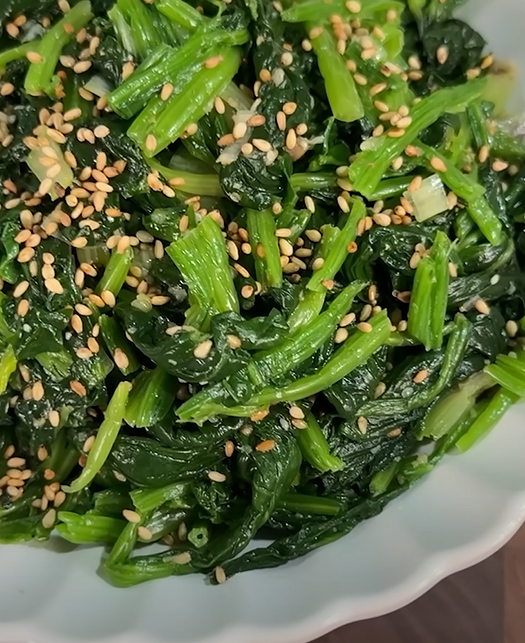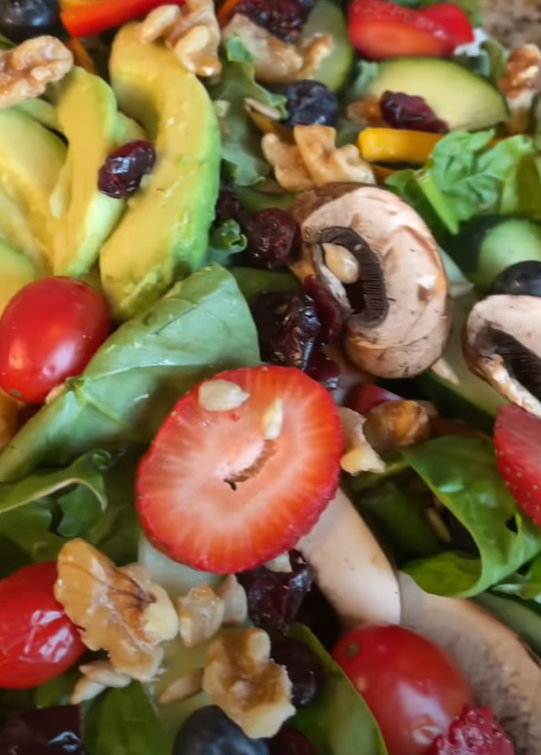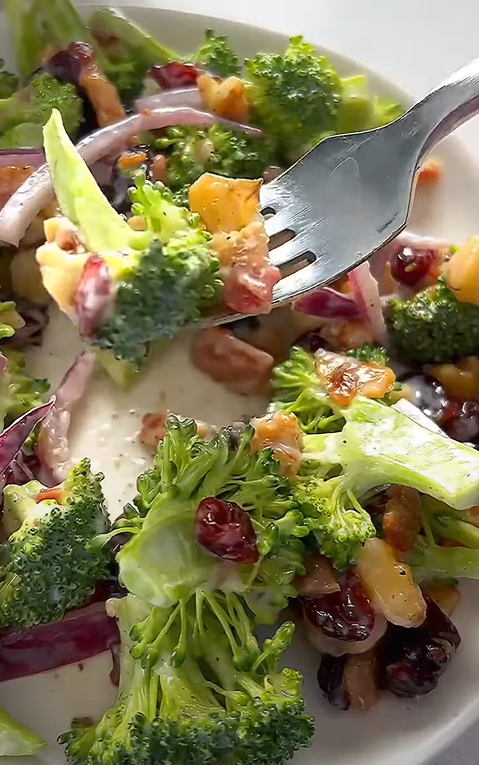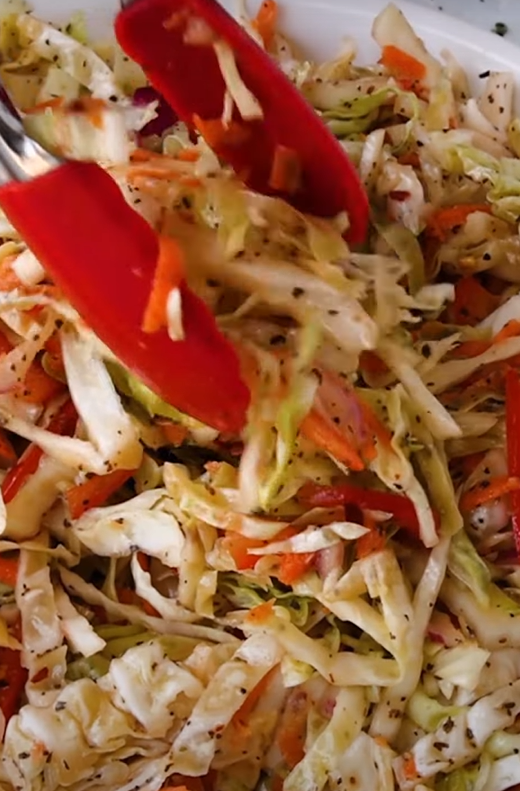Have you ever wondered what happens when childhood nostalgia meets serious baking skills? I discovered the answer when I first created these Big Blue Monster Stuffed Cookies. These aren’t just any ordinary cookies – they’re a vibrant celebration of flavor, color, and pure joy that transforms your kitchen into a playground of deliciousness.
My journey with these cookies began during a particularly dreary winter afternoon when I wanted to create something that would bring smiles to my family’s faces. The result was these incredible blue-hued treats that pack a surprise filling and deliver an experience that’s part cookie, part candy, and entirely magical. What makes these cookies truly special isn’t just their eye-catching appearance, but the way they combine multiple textures and flavors into one unforgettable bite.
Understanding the Magic Behind Monster Cookies
Monster Cookies : A style of oversized, loaded cookies that typically contain multiple mix-ins like candies, nuts, or other treats, creating a “monstrous” appearance and flavor profile.
Stuffed Cookies : Cookies that contain a filling or center, often cream cheese, frosting, or candy, completely encased within the cookie dough before baking.
Blue Food Coloring : Food-grade coloring agent that creates vibrant blue hues in baked goods without significantly altering taste or texture.
Cookie Dough Consistency : The proper texture balance in cookie dough that allows for easy handling while maintaining structural integrity during baking.
When I first experimented with these cookies, I learned that achieving the perfect “monster” look requires understanding how different ingredients interact. The blue coloring isn’t just for show – it creates a psychological expectation of fun that these cookies absolutely deliver on. The stuffing element adds complexity that elevates these from simple cookies to an interactive eating experience.
Essential Ingredients and Their Roles
Creating the perfect Big Blue Monster Stuffed Cookies requires careful attention to each ingredient’s purpose. Through countless batches, I’ve discovered that substitutions can dramatically change the final result, so understanding each component’s role is crucial for success.
| Ingredient | Quantity | Purpose | Substitution Notes |
|---|---|---|---|
| All-purpose flour | 3 cups | Structure and texture | Can use 1:1 gluten-free flour blend |
| Butter (unsalted) | 1 cup | Flavor and tenderness | Margarine works but affects taste |
| Brown sugar | 1 cup | Moisture and chewy texture | Light or dark both work |
| Granulated sugar | ½ cup | Sweetness and spread | Cannot omit without texture changes |
| Large eggs | 2 | Binding and richness | Each egg = ¼ cup applesauce for vegan |
| Vanilla extract | 2 tsp | Flavor enhancement | Almond extract creates different profile |
| Baking soda | 1 tsp | Leavening agent | Must be fresh for proper rise |
| Salt | ½ tsp | Flavor balance | Enhances sweetness perception |
| Blue food coloring | 1-2 tsp | Visual appeal | Gel coloring more vibrant than liquid |
| Mini chocolate chips | 1 cup | Texture and flavor | White chips create different look |
| Crushed cookies | ½ cup | “Monster” texture | Oreos or similar sandwich cookies |
The stuffing components deserve special attention because they’re what transform these from ordinary cookies into something extraordinary. My preferred stuffing combination includes cream cheese frosting mixed with mini marshmallows and additional cookie crumbs, but I’ve experimented with various alternatives that work beautifully.
Stuffing Options and Flavor Combinations
| Stuffing Type | Main Components | Flavor Profile | Difficulty Level |
|---|---|---|---|
| Classic Cream | Cream cheese, powdered sugar, vanilla | Sweet and tangy | Beginner |
| Marshmallow Fluff | Marshmallow creme, butter, vanilla | Super sweet and fluffy | Beginner |
| Cookie Butter | Cookie butter spread, powdered sugar | Rich and nutty | Intermediate |
| Peanut Butter | Peanut butter, powdered sugar, salt | Salty-sweet balance | Intermediate |
| Chocolate Ganache | Heavy cream, chocolate chips | Rich and decadent | Advanced |
| Funfetti Surprise | Vanilla frosting, rainbow sprinkles | Party-like fun | Beginner |
Through my experience, I’ve found that the cream cheese based stuffings work best because they hold their shape during baking while adding a delightful contrast to the cookie’s sweetness. The key is achieving the right consistency – thick enough to hold together but soft enough to create that “wow” moment when someone bites into the finished cookie.
Step-by-Step Preparation Process
My approach to these cookies has evolved through trial and error, and I’ve developed a method that consistently produces outstanding results. The process requires patience, but each step builds toward that final moment when you bite into a perfectly stuffed, beautifully colored cookie.
Preparing the Cookie Dough:
Starting with room temperature ingredients makes the mixing process smoother and ensures even distribution of flavors. I cream the butter and sugars together until the mixture becomes light and fluffy, which typically takes about 4-5 minutes with an electric mixer. This step is crucial because it incorporates air into the dough, contributing to the final texture.
Adding eggs one at a time prevents the mixture from breaking, and incorporating the vanilla extract at this stage ensures it’s evenly distributed. The blue food coloring comes next, and here’s where I’ve learned to be patient. Adding the coloring gradually allows you to achieve the exact shade you want without over-mixing the dough.
The dry ingredients get combined separately before being added to the wet mixture. I whisk together the flour, baking soda, and salt to ensure even distribution. When combining wet and dry ingredients, I mix just until combined to avoid developing too much gluten, which would make the cookies tough.
Creating the Perfect Stuffing:
For the classic cream cheese stuffing that I recommend for beginners, I start with 8 ounces of room temperature cream cheese. Cold cream cheese creates lumps that are difficult to smooth out, so planning ahead is essential. I beat the cream cheese until smooth, then gradually add powdered sugar until I achieve the desired sweetness and consistency.
The stuffing should be thick enough to hold its shape when scooped but not so thick that it’s difficult to work with. I often add a pinch of salt to balance the sweetness and enhance the overall flavor profile. Mini chocolate chips or crushed cookies can be folded into the stuffing for additional texture and visual interest.

Assembly Technique:
The assembly process is where these cookies transform from ordinary to extraordinary. I use a cookie scoop to portion the dough, taking about 2 tablespoons for the bottom layer. Creating a small well in the center of each dough portion provides space for the stuffing without causing overflow during baking.
I add approximately 1 tablespoon of stuffing to each well, being careful not to overfill. Overstuffing leads to leakage during baking and can cause the cookies to spread unevenly. The top layer of dough gets pressed gently around the edges to seal the stuffing inside, and I’ve found that slightly wetting my fingers prevents the dough from sticking during this process.
Baking Techniques and Temperature Control
My oven runs slightly hot, so I’ve learned to adjust accordingly, but the general principle remains consistent across different ovens. Preheating to 350°F (175°C) provides the right environment for these thick, stuffed cookies to bake evenly without burning the edges before the centers are done.
Baking Timeline and Visual Cues:
| Time Marker | What to Look For | Action Required |
|---|---|---|
| 0-5 minutes | Initial spreading | Monitor for even placement |
| 5-8 minutes | Edges beginning to set | No action needed |
| 8-12 minutes | Light golden edges | Check for doneness |
| 12-15 minutes | Centers appear set | Remove if done |
| 15+ minutes | Risk of overbaking | Check every 30 seconds |
The biggest mistake I made initially was overbaking these cookies. Because they’re thick and stuffed, they continue cooking from residual heat even after removal from the oven. I remove them when the edges are lightly golden and the centers still look slightly underdone. They finish cooking on the baking sheet and result in perfectly chewy cookies with slightly crispy edges.
Cooling on the baking sheet for 5 minutes before transferring to a wire rack prevents breakage while ensuring they don’t continue cooking on the hot pan. The stuffing needs time to set as well, so patience during the cooling process is essential for the best final result.
Nutritional Information and Dietary Considerations
Understanding the nutritional impact of these indulgent treats helps with portion planning and dietary accommodation. While these cookies are definitely a treat rather than health food, being informed about their nutritional content allows for mindful enjoyment.
| Nutrient | Per Cookie (1 large) | % Daily Value |
|---|---|---|
| Calories | 285 | 14% |
| Total Fat | 12g | 18% |
| Saturated Fat | 7g | 35% |
| Cholesterol | 45mg | 15% |
| Sodium | 195mg | 8% |
| Total Carbs | 42g | 14% |
| Dietary Fiber | 1.5g | 6% |
| Total Sugars | 28g | – |
| Protein | 4g | 8% |
| Calcium | 65mg | 6% |
| Iron | 1.8mg | 10% |
For those with dietary restrictions, I’ve successfully adapted this recipe multiple times. Gluten-free versions work well with a 1:1 flour substitute, though the texture becomes slightly more tender. Dairy-free adaptations require plant-based butter and cream cheese alternatives, which I’ve found work surprisingly well, especially the cashew-based varieties.
Sugar-free versions present more challenges because the sugar contributes to both sweetness and texture. I’ve had the best success using erythritol-based sweeteners, though the cookies don’t spread quite as much and have a slightly different mouthfeel.
Storage and Freshness Tips
Proper storage extends the life of these cookies significantly, and I’ve learned several techniques that maintain their quality over time. The stuffed nature of these cookies requires slightly different storage considerations than regular cookies.
Short-term Storage (1-3 days): Room temperature storage in an airtight container works perfectly for immediate consumption. I place parchment paper between layers to prevent sticking, especially important with the softer stuffed centers. The cookies actually improve slightly after the first day as flavors meld together.
Medium-term Storage (4-7 days): Refrigeration becomes necessary for longer storage, particularly because of the cream cheese based stuffings. I wrap individual cookies in plastic wrap before placing them in airtight containers. This prevents moisture loss while protecting the stuffing from absorbing other flavors.
Long-term Storage (1-3 months): Freezing works wonderfully for these cookies. I flash-freeze them individually on baking sheets before transferring to freezer bags. This prevents them from sticking together and allows for easy portioning. Thawing at room temperature for 30 minutes brings them back to perfect eating condition.
Troubleshooting Common Issues
Through countless batches, I’ve encountered and solved various problems that can arise when making these cookies. Understanding these common issues and their solutions helps ensure success every time.
Stuffing Leakage: This problem usually stems from overfilling or insufficient sealing. When stuffing leaks during baking, it creates a mess and affects the cookie’s appearance. I’ve learned to use slightly less stuffing than I think I need and to really press the dough edges together firmly.
Uneven Coloring: Sometimes the blue coloring appears streaky or uneven in the finished cookies. This happens when the coloring isn’t fully incorporated into the dough. I now add the coloring gradually and mix thoroughly at each addition, scraping down the bowl sides frequently.
Spreading Issues: Too much spreading can cause the cookies to lose their shape and affect the stuffing distribution. This usually indicates that the dough is too warm or the butter was too soft initially. Chilling the assembled cookies for 15 minutes before baking helps maintain their shape.
Dry or Tough Texture: Overbaking is the most common cause, but overmixing the dough can also create tough cookies. I stop mixing as soon as the ingredients are combined and rely on visual cues rather than timing alone for doneness.
Creative Variations and Seasonal Adaptations
The beauty of this recipe lies in its adaptability. I’ve created dozens of variations by changing colors, stuffings, and mix-ins to match different occasions and preferences.
Holiday Variations:
- Christmas: Red and green coloring with peppermint stuffing
- Halloween: Orange coloring with chocolate-caramel stuffing
- Valentine’s Day: Pink or red with strawberry cream stuffing
- Easter: Pastel colors with lemon or vanilla bean stuffing
Flavor Profile Changes:
- Chocolate monsters: Cocoa powder added to dough with fudge stuffing
- Tropical monsters: Coconut extract with pineapple cream stuffing
- Spiced monsters: Cinnamon and nutmeg with cream cheese stuffing
- Citrus monsters: Lemon zest with lemon curd stuffing
Each variation follows the same basic technique but offers completely different flavor experiences. The key is maintaining the proper dough consistency while incorporating new flavors.
Serving Suggestions and Presentation Ideas
These cookies are impressive on their own, but thoughtful presentation elevates them to party-worthy status. I’ve served them at numerous gatherings and learned which accompaniments work best.
Beverage Pairings: Cold milk remains the classic choice, but I’ve discovered several other beverages that complement these rich cookies beautifully. Iced coffee provides a nice contrast to the sweetness, while hot chocolate creates an indulgent combination perfect for winter gatherings. Fruit-infused waters help cleanse the palate between cookies, especially important when serving multiple varieties.
Plating and Presentation: Individual serving plates work best for these large cookies, allowing each person to fully appreciate the size and appearance. I often dust the plates lightly with powdered sugar or cocoa powder for visual contrast. Fresh berries or mint leaves add color and freshness that balances the richness.
For parties, I create a cookie bar setup with different stuffed varieties, allowing guests to choose their favorites. Small cards describing each variety help guests make informed choices and create conversation starters.
Questions and Answers
Q: Can I make the dough ahead of time and stuff the cookies later?
The dough actually benefits from some chilling time, so preparing it ahead works perfectly. I often make the dough the night before, wrap it tightly, and refrigerate overnight. The chilled dough is easier to handle during assembly and helps the cookies maintain their shape better during baking.
Q: What’s the best way to achieve vibrant blue coloring without affecting taste?
Gel food coloring works much better than liquid versions for achieving vibrant colors without adding excess moisture to the dough. I start with a small amount and gradually add more until I reach the desired shade. Some brands have stronger coloring power than others, so I always test with a small portion first.
Q: Can I use store-bought frosting for the stuffing?
While homemade stuffing tastes better, store-bought frosting can work in a pinch. I recommend thickening it with additional powdered sugar to prevent leakage during baking. The consistency should be similar to thick peanut butter for best results.
Q: Why do my cookies spread too much during baking?
Excess spreading usually indicates that the dough is too warm or contains too much butter. Chilling the assembled cookies for 15-20 minutes before baking helps maintain their shape. Also, ensure your butter is at proper room temperature (soft but not melted) when mixing the dough.
Q: How do I know when stuffed cookies are properly done?
Stuffed cookies take longer to bake than regular cookies because of their thickness. I look for lightly golden edges and centers that appear set but still slightly soft. They continue cooking from residual heat after removal, so slightly underbaking is better than overbaking.
Q: Can I freeze the assembled unbaked cookies?
Yes, freezing unbaked assembled cookies works wonderfully for advance preparation. I place them on baking sheets and freeze until solid, then transfer to freezer bags. They can bake directly from frozen, adding just 2-3 extra minutes to the baking time.
Q: What’s the secret to preventing the stuffing from leaking out?
Proper sealing is crucial for preventing leakage. I make sure the dough edges are pressed firmly together and that I don’t overfill the cookies. Using stuffing that’s the right consistency (thick but not stiff) also helps prevent leakage during baking.
Q: How can I make these cookies less sweet for adult palates?
Reducing the sugar slightly and adding a pinch of sea salt to both the dough and stuffing helps balance the sweetness. I also like to use dark chocolate chips instead of milk chocolate for a more sophisticated flavor profile that appeals to adult tastes.
Making These Cookies Your Own
The journey of perfecting these Big Blue Monster Stuffed Cookies has taught me that baking is as much about creativity as it is about following recipes. Each batch presents an opportunity to experiment with new flavors, colors, and presentations that reflect your personal style and preferences.
What I love most about this recipe is its forgiving nature. Minor variations in technique or ingredients rarely result in failure, instead creating unique variations that often become new favorites. The joy on people’s faces when they bite into these colorful, surprise-filled treats makes every moment of preparation worthwhile.
Whether you’re baking for a special occasion or simply want to bring some whimsy into your kitchen, these cookies deliver an experience that goes beyond typical baked goods. They’re conversation starters, smile creators, and memory makers all rolled into one delightful package.
The next time you want to create something truly special in your kitchen, remember that sometimes the most magical results come from embracing the playful side of baking. These Big Blue Monster Stuffed Cookies represent everything I love about home baking – creativity, joy, and the power of food to bring people together in celebration of life’s sweet moments.


